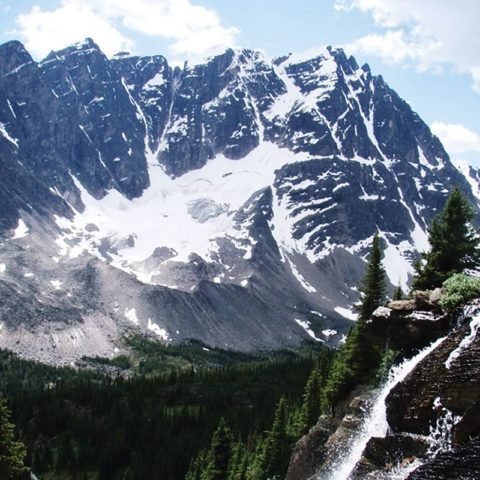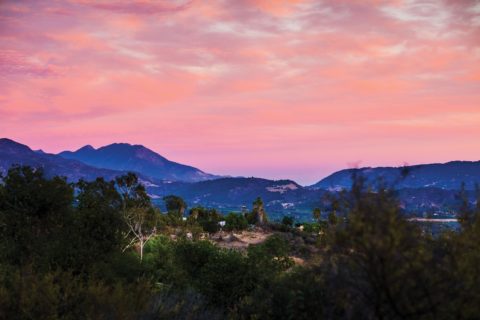The Best Hiking Trails Around the World for Every Level of Experience
Mountains can be as challenging as they are alluring, and I reluctantly like them that way. If a hike’s too easy, I’m not coaxed out of my comfort zone. If I didn’t push through switchbacks and scramble over a few rocks, I wouldn’t know what I’m capable of. The view at the top isn’t always the one I anticipate; sometimes it’s completely clouded over. It’s in those moments I’m reminded that hiking is a metaphor for life: There are no guarantees; I only have control over the steps I keep taking. — Joy Pecknold
Scroll down to see the most incredible hiking trails around the world for every level of experience.

Ciudad Perdid (Lost City) Trail, Colombia
Level: Enthusiast
Ever since I climbed Mount Blakiston in Waterton Lakes National Park in southern Alberta with my fellow Girl Guides, I’ve been smitten with hiking. I still remember our troupe traversing a narrow cliff across a treeless ridge and nervously glancing at the lake far, far below. That was perhaps the first time that the phrase “being in the moment” resonated with me. (When a bear entered our camp that night it was another one of those moments.)
Over the years I’ve ticked off my “bucket list” of hikes, including a five-day trek on the Annapurna Circuit in Nepal, the gruelling 75-kilometre West Coast Trail on Vancouver Island and a two-day scramble up Mount Olympus in Greece. I was dazzled hiking Peru’s Colca Canyon and Machu Picchu, but I was craving something a little more remote when I set my sights on walking the 50-kilometre Ciudad Perdida (Lost City) trail in Colombia. The pre-Incan site was built around 800 AD but abandoned four centuries later during the Spanish conquest. Some local treasure hunters rediscovered it in the 1970s. The Colombian government now manages the site, and despite occasional tensions with armed guerrillas, it was gradually restored and is now safe to explore.
During the four-day hike, you sleep in hammocks and wend your way through a jungle of giant trees draped in bromeliads and dangling lianas. Along the way you stone-hop across rivers, gingerly negotiate steep cliffs and also encounter the indígena who live there in circular thatched-roof huts. The Arhuaco, Kogi, Kankuamo and Wiwa tribes are fairly indifferent to the interlopers on their land. They dress entirely in white because they believe they are entrusted with protecting the earth and that white reflects the purity of that responsibility. (Wearing white in a muddy jungle is no small sartorial feat.)
The highlight is reaching the Lost City. To get there, you first have to climb 1,200 mossy stone steps. Once you reach the top—completely drenched in sweat—you’re free to explore the 200-plus structures with terraces and imagine what life was like for the Tayrona people who once lived here. It’s one of my favourite hikes because there is this unforgettable blending of natural and cultural encounters. Think National Geographic meets Raiders of the Lost Ark. — Noreen Flanagan

Big Bend National Park, Texas
Level: Novice
Having spent many sweltering summer vacations visiting relatives in Texas, I was initially hesitant when a friend suggested an outing to Big Bend National Park, southwest on the Mexico border. Outdoor activities are not something I associate with the heat, and suburban sprawl, of the Lone Star State, but since we were visiting this time in October, I agreed.
To my pleasant surprise, autumn was in fact the best time to visit because it offered excellent conditions for hiking. The wildflowers were in bloom, and average temperatures maxed out in the mid-20s, which was ideal for hikes in T-shirts and denim cut-offs.
Big Bend is one of the least visited and most remote National Parks in the contiguous United States. It includes 3,242 square kilometres of scenic trails that wind through the diverse terrains of the northern end of the Chihuahuan Desert, the Rio Grande river and the Chisos mountain range.
We were also travelling this time with a toddler. We had done short walks in the woods with our daughter, but Big Bend was our first opportunity to take her on a marked trail, and we wondered how she would observe the park’s diverse flora and fauna (over 1,o00 types of plants and more than 450 species of birds) and striking geology.
The popular Lost Mine Trail, so named after a local urban legend, was advertised as one of the most scenic day hikes in the park; luckily, it was also family-friendly. It offered a clear path, a gradual incline and plenty of stunning lookouts that doubled as convenient pit stops for drinks and snacks. The 7.7-kilometre trail was moderately difficult, and we slowly ascended through a verdant forest of juniper, oak and piñon pine trees, spotting countless Insta-worthy views of Casa Grande Peak as well as Juniper and Pine Canyons along the way. Eventually, our daughter even stopped crying about being strapped to her father’s back in a loaner baby carrier.
In the end, our reward came at an elevation gain of 1,300 feet, where we marvelled at the panoramic view of Big Bend’s dramatic landscape and Mexico’s Sierra del Carmen mountain range while resting on a rocky ridge together, as a family. — Truc Nguyen

Fryatt Valley, Jasper National Park, Alberta
Level: Expert
I’m not sure I’d recommend the eight-hour, 23-kilometre trek from Jasper National Park’s Fryatt Valley to Sydney Vallance Hut to a novice hiker, but if you let ignorance get the best of you—like I did—bliss really does live in the peaks of the Canadian Rockies. Guided by a close friend, I got a crash-course in backpacking I’ll never forget.
Though this hike gets more challenging with every step, you have options in the first 11 kilometres, which start on a flat, old fire road; we biked, and later locked our bikes to trees, cutting roughly an hour from the overall journey. This kind of insight from an experienced guide is almost as important as the right gear—a truth, comical in hindsight. After pumping and filtering icy mountain runoff into a pink Nalgene bottle, I was ecstatic at my success but then rolled my ankle on the rocks seconds later and watched my hard-earned drinking water—and dignity—trickle away. You’ve been warned: Wear your ankle braces, if you need them; wear the right hiking boots, always; and, along with your water filter, pack your medical kit, bear spray (to make noise along the way), freeze-dried food and even your choice spirits. (It adds weight, but you’ll be thankful at the top.)
We stopped to catch our breath and eat lunch while overlooking Fryatt Valley—360 degrees of nature’s finest—and tried not to obsess over being only at the halfway mark of our trip. From here, we walked through a wide, open canyon, surrounded by mountains and more stones (tough on my twisted ankle), guided by only small directional signs. Approximately four hours later, we reached the 200-metre hands-and-feet scramble up the final steep path called the Headwall. Even skilled hikers like my guide describe this 45-degree incline as a challenge. It’s the most trying part of the expedition, and, laden with exhaustion, it was the point where I held back tears.
Just when I thought I couldn’t go any farther, Sydney Vallance Hut greeted us. It’s a few ticks away from glamping, but at an elevation of 6,495 feet, the peaceful accommodations and sweeping views only add to the emotional high of getting there. First built in 1970, and renovated in 1999 and 2012, the private 12-sleeper log cabin is operated by the Alpine Club of Canada. Even non-members can rest up here, with a modest bunk with a mattress pad, wood-fire heat and propane lights and stovetops, for a nominal fee of $40 per night.
The next day we hiked a little farther, to a glacier where we watched as clouds cast shadows on treetops below and spotted mountain goats climbing what would appear to be our own private clifftop. It’s an exclusive experience, one that is ultimately available to anyone willing to put in the work. — Caroline Gault








